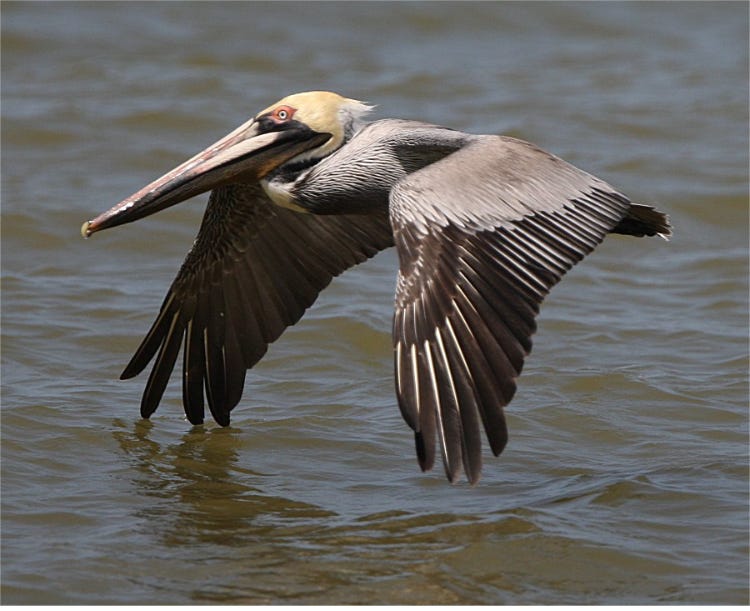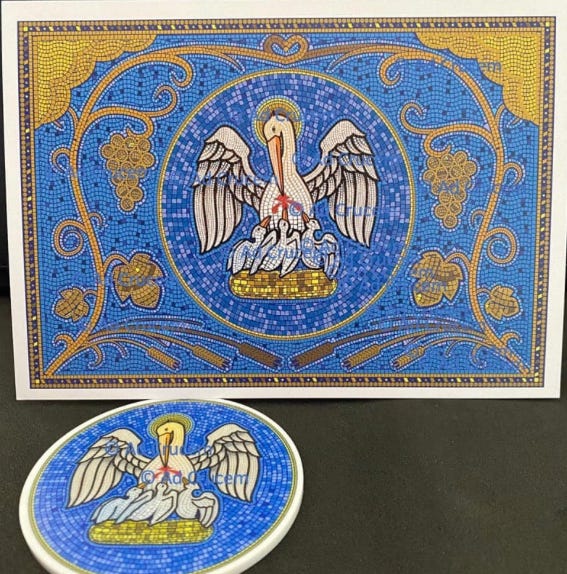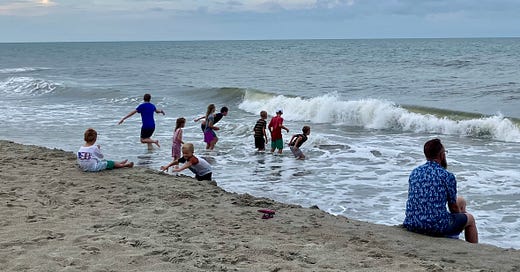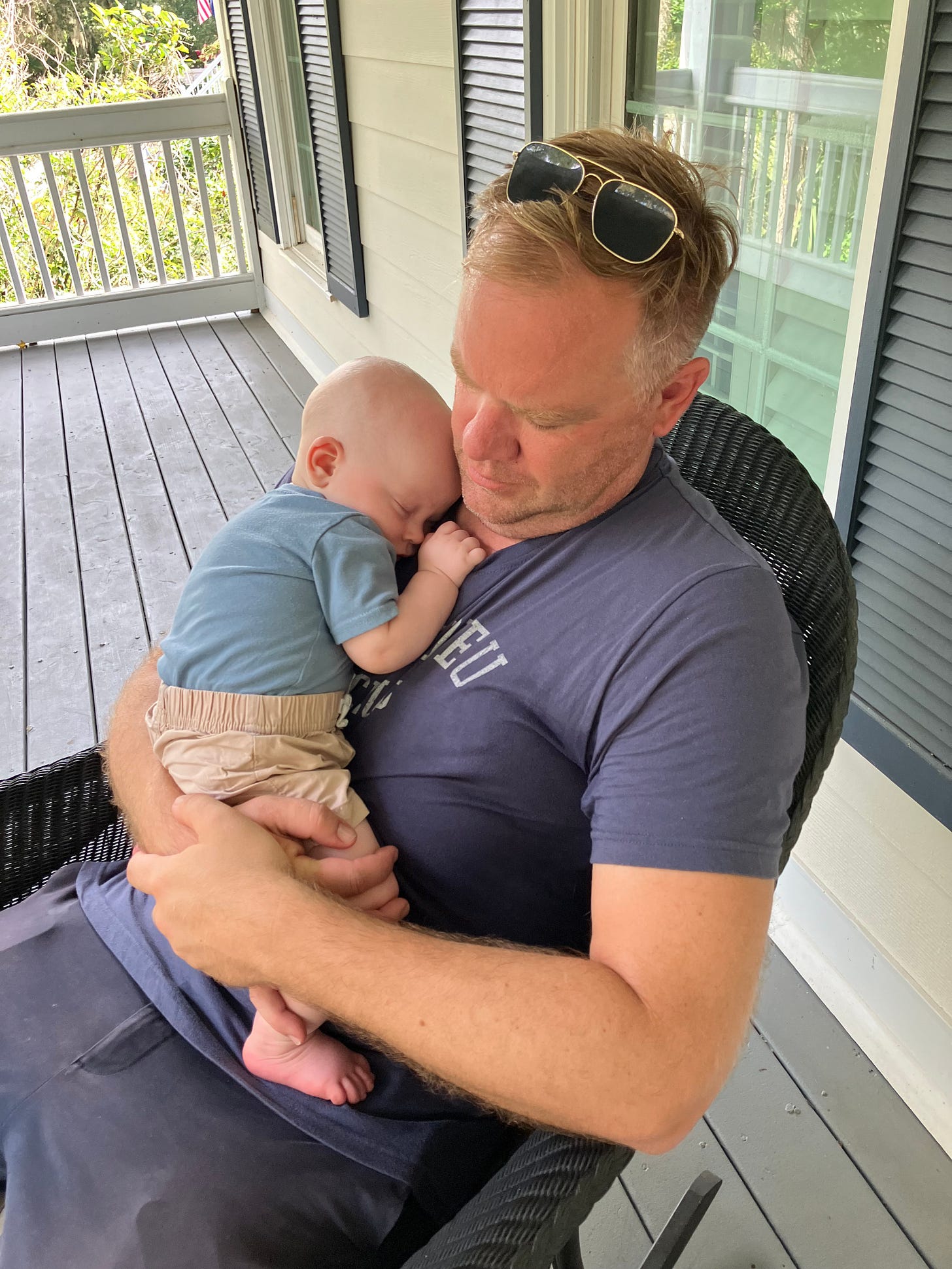There’s something about the ocean that compels one to look at it.
It is immense. Endless. The waves crash continually, hypnotically. Daylight, at different times and with so many types of clouds muting its rays, reflects off the surface constantly, varying the manifold shades of the water, now crystalline turquoise far out toward the horizon, now turgidly gray at the shore, now a spectrum of royal to sullen blues, and even greens and browns and yellows. The wind and the moon’s position change the patterns of the rolling swells, now ponderously heavy, now meek and gentle, always building and breaking, turning and turning.
A few weeks ago, I was marveling at this, and the privilege once again to witness the ocean’s beauty, so different from the mountains we call home. Then I saw movement, a score or so feet above the ground, out of the corner of my eye. I turned my head away from the water.
Relatively low, just in front of the tall waving grasses and fine, clapboard and verandaed beach houses lining the sand, I saw the large grey-brown figure gliding.

Long, rapier-like beak. Huge wingspan, with dark thundercloud feathers in the overcast sky. An easy coasting on the gentle breeze, periodic beats between wind-borne carries. A slightly ominous flight, like a casual scouting expedition that could at any moment become an attack. Formidable, I thought.
It was a brown pelican, as close as I’ve been able to discover. Merlin Bird describes them as
Large and conspicuous… of saltwater habitats. Strictly coastal; rarely seen on inland lakes. Very long bill with pouch for scooping up fish. Forages mainly by diving on fish from above. Frequently cues into fishing activity looking for handouts. Often flies in long lines close to water's surface.
This summarizes the creature I saw. Or rather, the many I saw. For after I turned to see the bird flying parallel toward where I stood, I saw that there was more than one cruising on the air behind it. Way more. Dark shapes in a strung out, breeze-lifted line.
I started counting.
“…nine, ten, eleven, twelve, thirteen.”
Thirteen pelicans! A baker’s dozen, flying in a loose row, almost casually zigzagging over the shoreline. Each one was about the size of a small dog with probably a four-to-five-foot wingspan. Maybe even more.
Their figures, stark against the light sky, smoothly moving individually and as a group, starkly impressed me. They were huge and there. They were significant, bodied creatures. This was their home, by the shore, the sandy flats and level spaces beneath the inland marsh grasses where they nest nearby. I couldn’t ignore their presence, no matter that they weren’t making any noise that I could hear over the constant roar of waves. They had captured my attention totally away from the measureless sea.
And from something else. Or rather, someones else. As I gazed at the magnificent birds, I realized that there were thirteen children with me. Thirteen! In the water or the sand, happily playing and splashing and swimming and building and growing behind me. Eight of them are my children, and five are nieces and nephews.
Thirteen children! They, too, are significant, bodied creatures. Small against the wide world and yet so substantial in their being. Who will they become? I thought. Who will they fly with? Will they stay together? Will they spread apart?
The possibilities are so numerous, especially since they are young. Almost like the grains of sand or the sight, as far as I could see, of the shadow blue-gray waves of the Atlantic Ocean.
But the children are created, like the pelicans. And like the pelicans, they are known. And being known, from beginning to end, and being made in the imago Dei means that they hold incarnate purpose. They are formidable because they are fearfully and wonderfully made.
One of my favorite sources for Christian materials is
. As I thought about pelicans, and about children, I thought of this card, which I shamelessly screenshot from their website, which you should absolutely visit.
The explanation for the above is as follows:
In medieval bestiaries, the Pelican was often pictured piercing her own breast to feed her chicks her own blood. The ancients believed that, in times of scarcity, a pelican would feed its own flesh to its young, in order to sustain them. The church adopted this imagery (referencing Psalm 102:6) and applied it to Christ, who nurtures and protects His people with His own Body and Blood.
I hope these children stay connected, to each other and to others in the Faith. I hope they grow strong and confident in their places and their vocations, formidable in their acts of service to their neighbors.
May they be as the pelicans, nourished by the One who made them and gives, endlessly and unfathomably and beautifully, to them.
Please pray for the people and homes in coastal South Carolina, like where we were north of Charleston, and other states along the eastern seaboard. Tropical Storm Debby looks to dump destructive amounts of rain there this week.






Pelicans are fascinating birds. I used to like to watch the white ones on bird island at Pathfinder. They sound like creaky hinges when they fly!